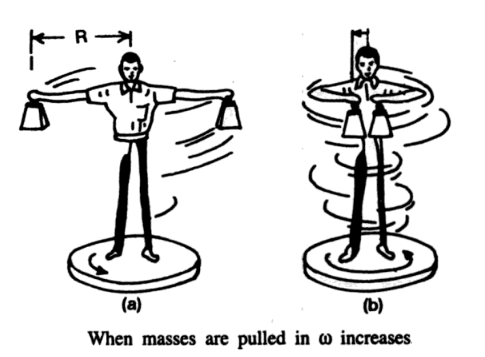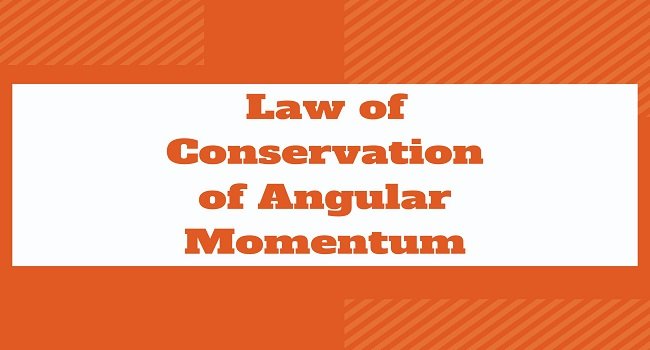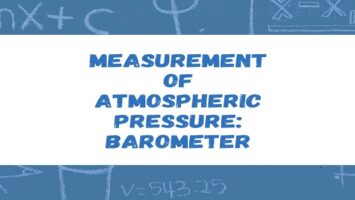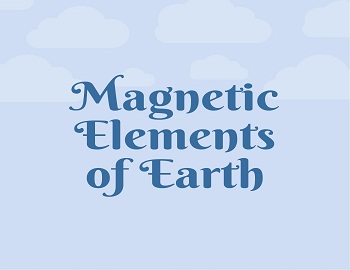Law of Conservation of Angular Momentum:
If no torque acts on the rotating body i.e., if 𝜏 = 0, then
| dL/dt = 0 L = Iω = constant |
Thus, when no torque acts on a rotating body its angular momentum is conserved- this is the law of conservation of angular momentum.
For a rigid body, I remain constant during motion, so also its ω. But for a flexible body (like a human being) if inertia changes from I1 to I2, then in the absence of torque angular velocity will change from ω1 to ω2 such that I1ω1 = I2ω2.

An interesting example based on the above principle is provided by the turn table demonstration. When a man with outstretched arms and holding weights in each hand, stands on a turn-table that is revolving, he has a certain angular momentum. Now if he pulls the weights in, towards his body, there is a sudden increase in the angular velocity. This is because the moment of inertia of the man decreases when he pulls the weights inward. Conservation of angular momentum demands that the decrease in moment of inertia I must be accompanied by an increase in angular velocity ω so that the angular momentum Iω remains constant. Ballet dancers, ice skaters, and drivers also utilize the conservation of angular momentum in a similar way.
We have obtained the law of conservation of momentum for the rotation of a rigid body in which particles move in circular paths, however, it is emphasized that the law of conservation of angular momentum holds good even in those cases where the path followed by the moving body is not circular. Thus when a planet revolves around the sun in an elliptical path, the angular momentum about the sun is conserved.









Comments (No)